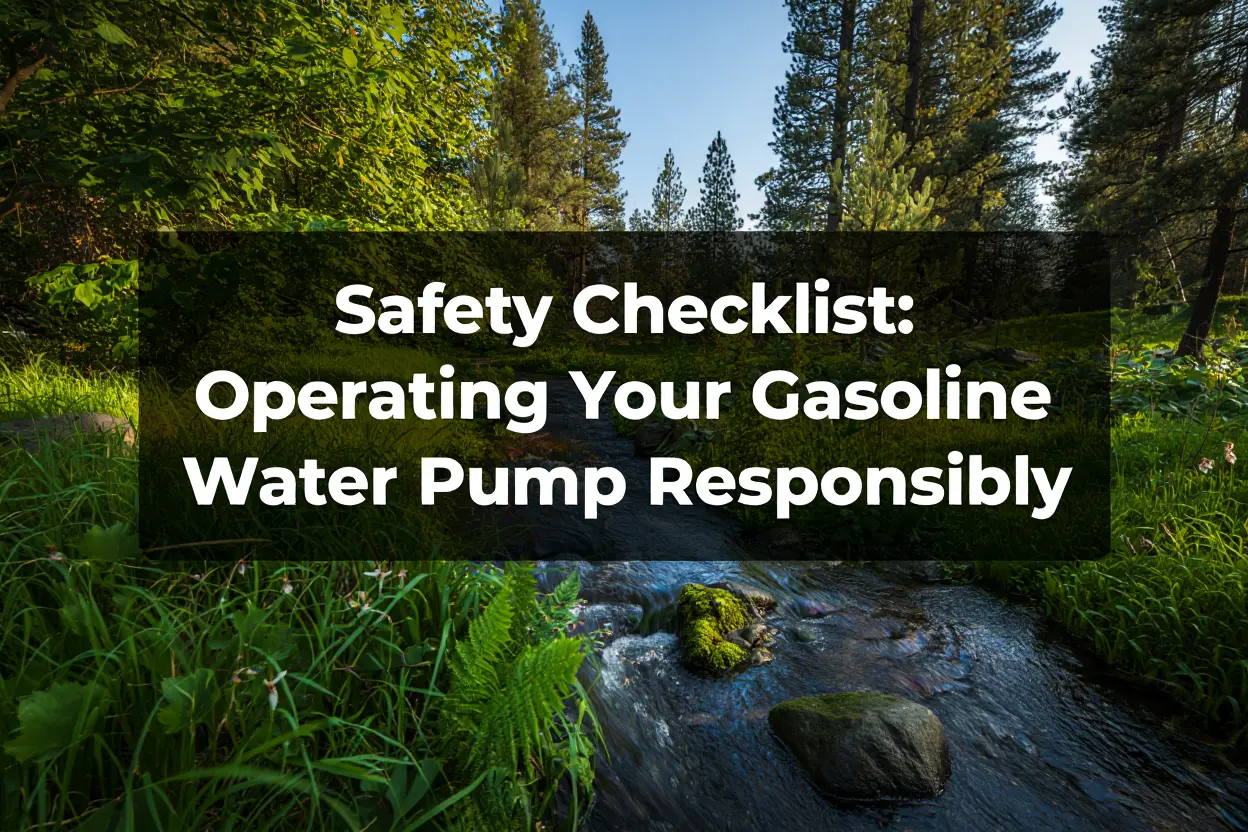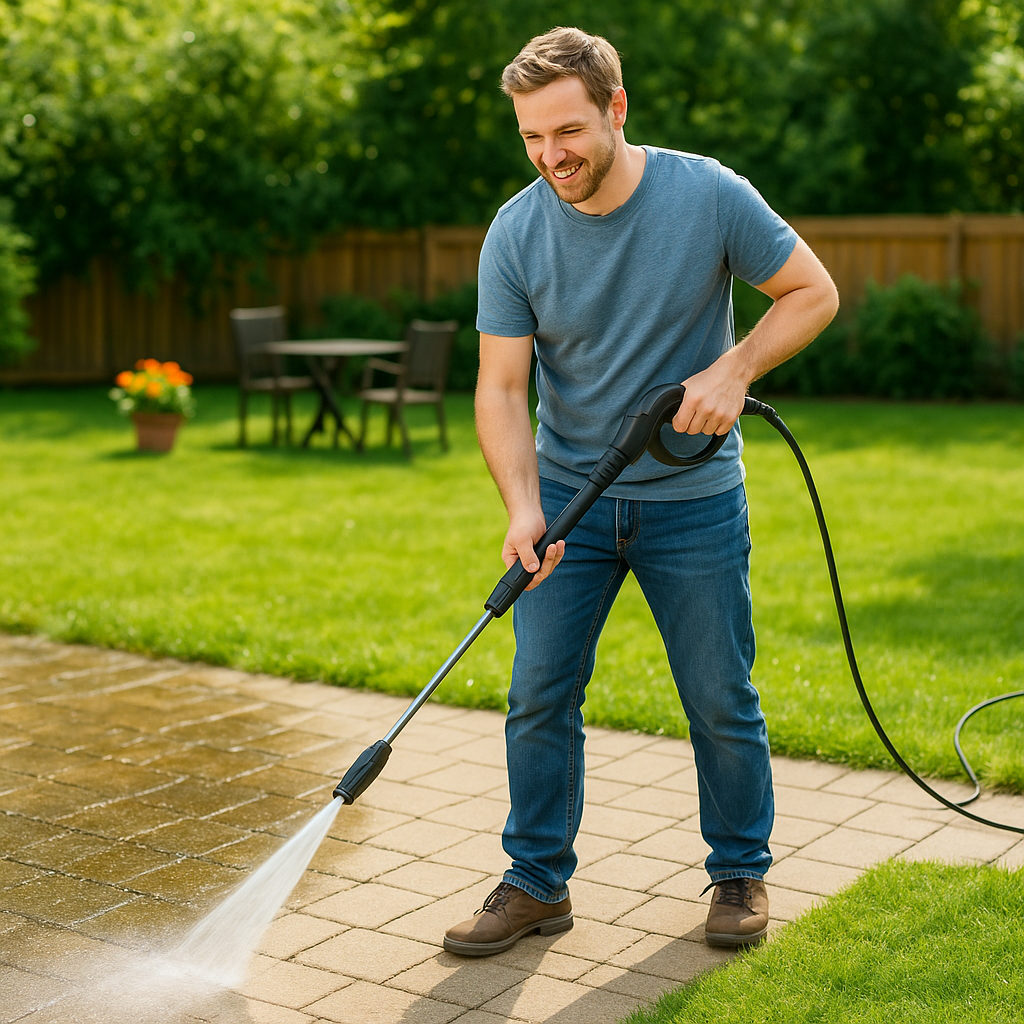
A Gasoline Water Pump is a powerful and essential tool for a variety of applications—from agricultural irrigation to flood control and construction site dewatering. While these machines are built for strength and efficiency, operating them responsibly is crucial for ensuring both safety and long-term reliability.
At Bonhoeffer, we design our Gasoline Water Pumps with user safety in mind, incorporating durable materials and intuitive features. But as with any machinery, correct handling and routine safety checks are key. This blog offers a comprehensive safety checklist to help you operate your Gasoline Water Pump confidently and responsibly.
✅ Pre-Start Safety Checks for Gasoline Water Pump
Before starting your Gasoline Water Pump, make sure the following steps are completed:
1. Read the User Manual
Familiarize yourself with the pump’s operation, warning labels, and maintenance procedures. Each Bonhoeffer model includes a detailed manual for quick and safe setup.
2. Inspect the Pump Thoroughly
Check all bolts, fuel lines, hoses, and connections. Look for signs of wear, cracks, or leaks. Even a small leak can cause fuel hazards or lower performance.
3. Check the Fuel and Oil Levels
Use clean gasoline and ensure oil levels meet manufacturer guidelines. Avoid overfilling, and never refuel while the pump is running or hot.
4. Choose a Safe Operating Location
Place the Gasoline Water Pump on a flat, dry surface in a well-ventilated area—away from flammable materials or enclosed spaces.
✅ Starting and Operating the Gasoline Water Pump
Safe operation is about control and awareness. Follow these steps every time you use the pump:
5. Use Protective Gear
Wear gloves, safety goggles, and hearing protection. While Bonhoeffer pumps are designed to be quieter, long-term exposure still warrants ear protection.
6. Prime the Pump (If Required)
Some models require manual priming. Follow the instructions carefully to avoid dry-running the pump, which can cause severe internal damage.
7. Start in Neutral
Ensure the throttle is set to low and the pump is not under load during ignition. This helps prevent sudden surges and mechanical stress.
8. Monitor the Discharge Area
Make sure the outflow area is clear of obstructions and people. Avoid kinks in hoses that could cause back pressure or water bursts.
✅ During Operation
Maintain a safe and efficient operation by keeping an eye on performance and surroundings.
9. Never Leave the Pump Unattended
A running Gasoline Water Pump should always be monitored. Sudden changes in pressure, fuel levels, or hose conditions can pose risks if not addressed promptly.
10. Watch for Overheating
If the pump seems too hot, reduce the load and allow it to cool. Operating continuously at full power can overwork the engine.
11. Keep Children and Animals Away
Maintain a safety zone around the pump while it’s running. This prevents accidents involving hot surfaces or moving parts.
✅ Post-Use Shutdown & Maintenance
Safety doesn’t end when the job is done. Proper shutdown and care extend the life of your equipment.
12. Allow the Pump to Cool Before Refueling or Storing
Turn off the engine and wait until all components have cooled down. Refueling a hot engine is a serious fire hazard.
13. Drain Water and Fuel When Not in Use
Empty the tank and water lines if the pump won’t be used for a while. This prevents internal corrosion and fuel degradation.
14. Clean and Store Properly
Wipe down the exterior and store the Gasoline Water Pump in a dry, sheltered area. Use a cover if available to protect from dust and moisture.
Final Thoughts
Operating your Gasoline Water Pump responsibly is not just about safety—it’s about maximizing performance and protecting your investment. Bonhoeffer pumps are built to handle tough jobs, but they work best when used with care and attention.
Explore our complete range of dependable, high-performance Gasoline Water Pumps at bonhoeffermachines.com and take the first step toward safe, efficient water management.
Also Read: Gasoline Water Pump Flow Rates & Pressure Ratings







